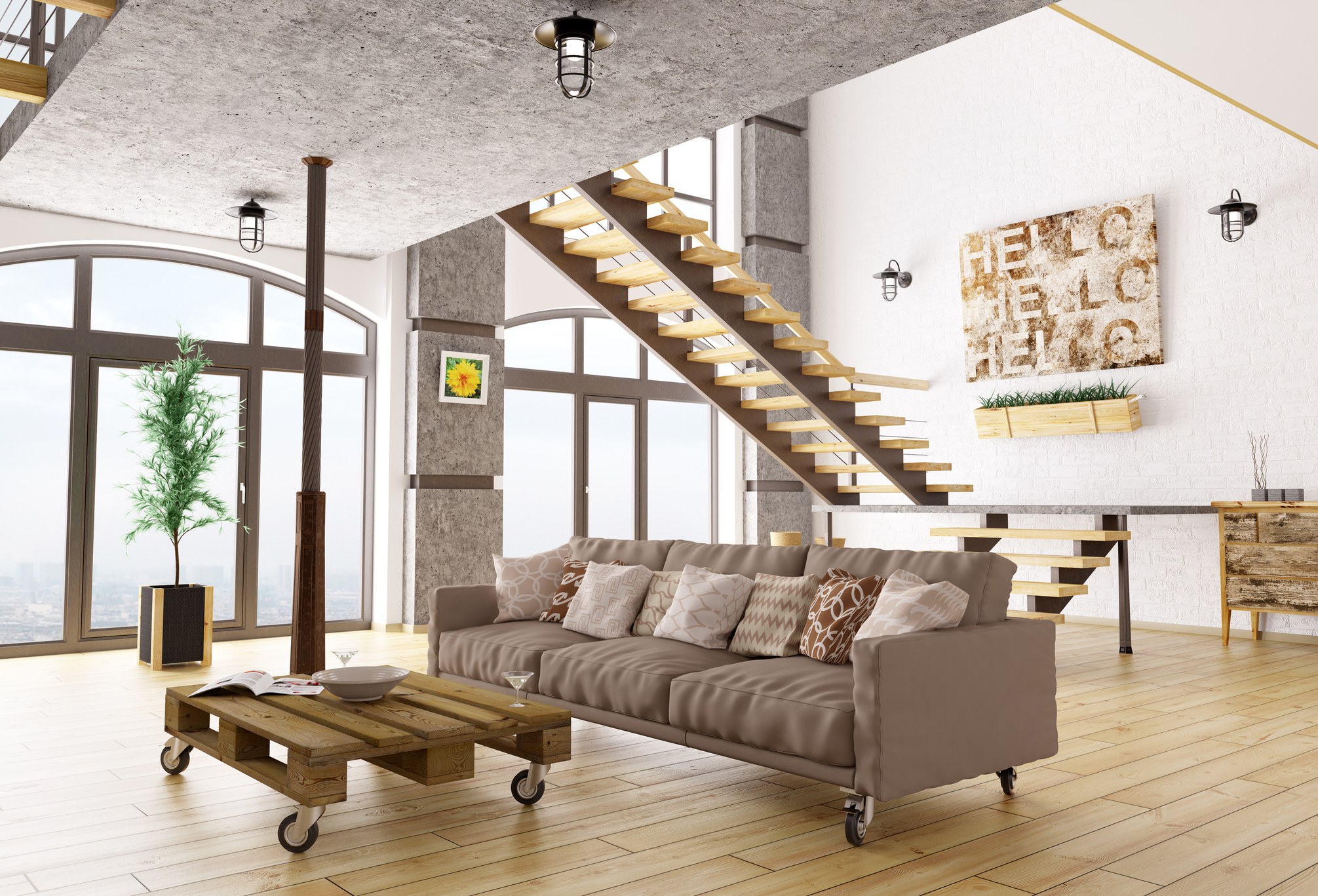Choosing a window style at home is not at all easy: the process takes a lot of time, and there are many factors that need to be considered.
Your windows are your home’s gates to the outside world – they reflect style and architecture and allow sunlight and fresh air to complement your interior.
There are many house window designs and you really need to be aware of the “soul” of your house to choose the right one.
Here comes an interesting list of descriptions of different styles. We invite you to go through it and choose a suitable and modern design for residential windows.
Examples of modern window design
Fixed windows
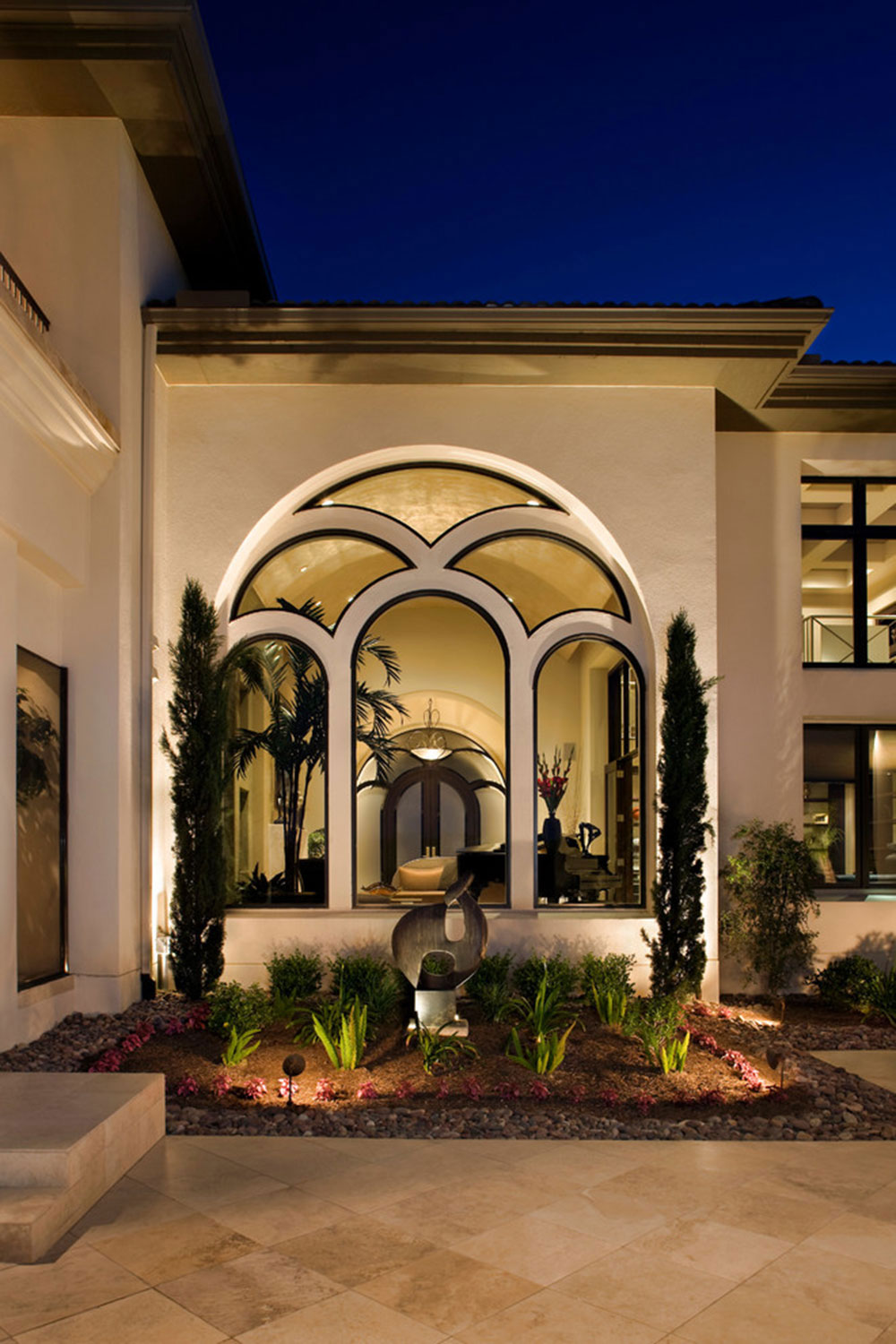 Image source: JAUREGUI Architecture Interiors Construction
Image source: JAUREGUI Architecture Interiors Construction
Fixed windows (also known as panoramic windows) are those that cannot slide, swing, or tilt because they are completely attached to a frame. Hence, they are not the best choice for a room that needs fresh air.
Instead, they are usually flanked by double-hanging sashes positioned under or over funnels and awnings.
In case you need them, it’s good to know that they come in all sizes and shapes (square, trapezoidal, round, half-round, etc.). Their biggest advantage is the affordable price, which is characterized by reliable energy efficiency and a beautiful appearance.
Awning window
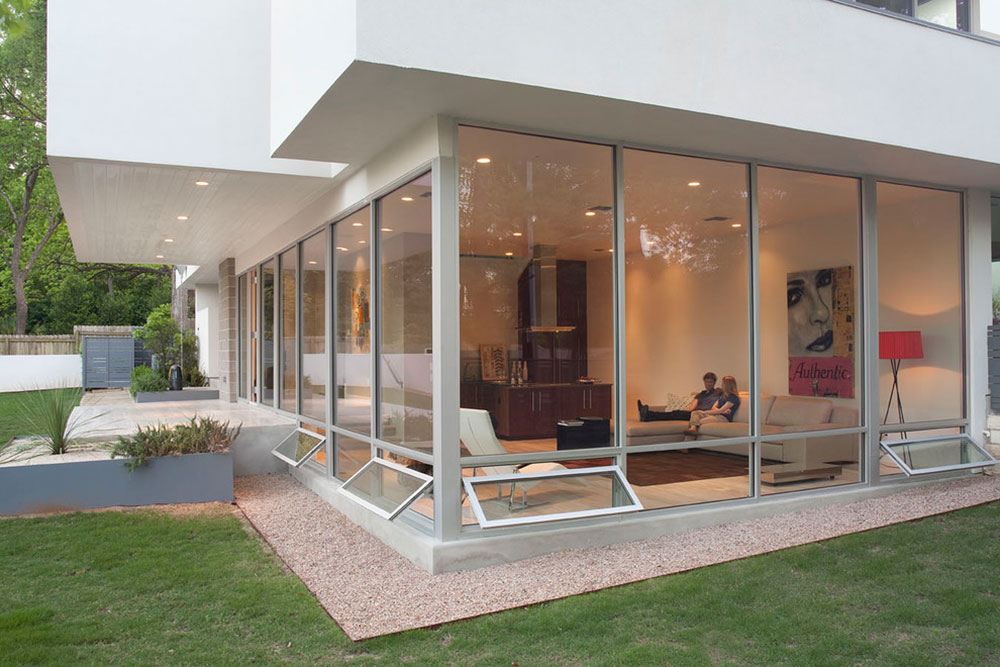 Image source: Hugh Jefferson Randolph Architects
Image source: Hugh Jefferson Randolph Architects
Awning windows are designed to allow water to drain from the window opening (they hang from above and open from below to the outside).
Their usual position is over fixed windows and they are mostly used in garages, cubicles or other places where ventilation and privacy are more important than aesthetics. However, awning windows are very typical of Mediterranean design styles.
Casement window
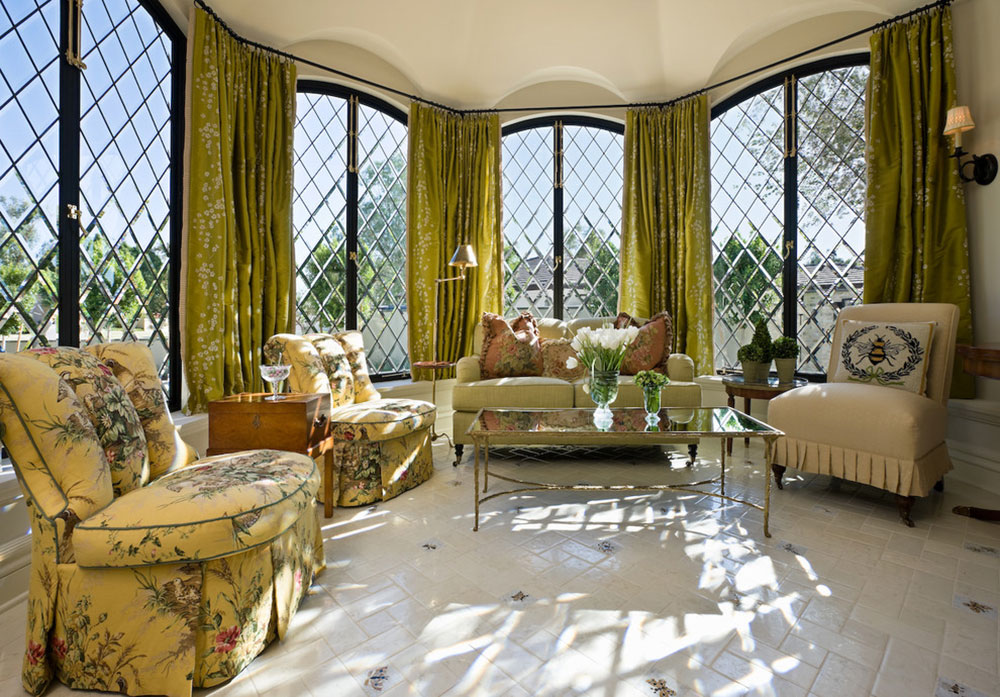 Image source: PHX architecture
Image source: PHX architecture
You can recognize a casement window by the fact that it is hinged on the sides and opens outwards, just like a door. It has no rail, which is why it resembles a picture widow.
It can be pushed or opened with a hard crank and the screens are displayed on the inner part for protection. Because of this, these windows are typically installed over sinks, appliances, and countertops.
Double and single windows
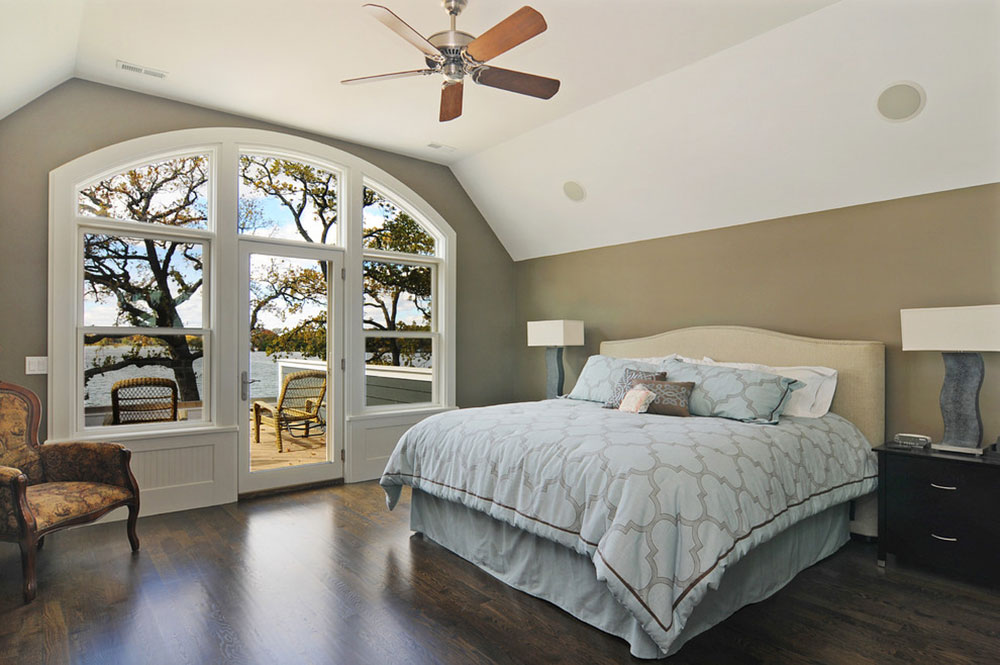 Image source: A. Perry Homes
Image source: A. Perry Homes
A double hanging window is the one you open vertically, and it has two fully functional windows (the lower one moves parallel to the upper window, just as the later window moves on top of it).
Double-hanging windows are a common choice for more ventilation because you can let air in from both below and above. They also look very cozy and traditional.
We wouldn’t exactly count them among the most popular window styles, but they are certainly what a person would describe as unique.
When you move them they won’t protrude, making them suitable for rooms that are directly exposed to a deck or patio. Even small rooms can benefit from this solution.
Single-hanging windows are a cheaper version of their double-hanging counterparts and have an operable lower pane that moves parallel to the upper one.
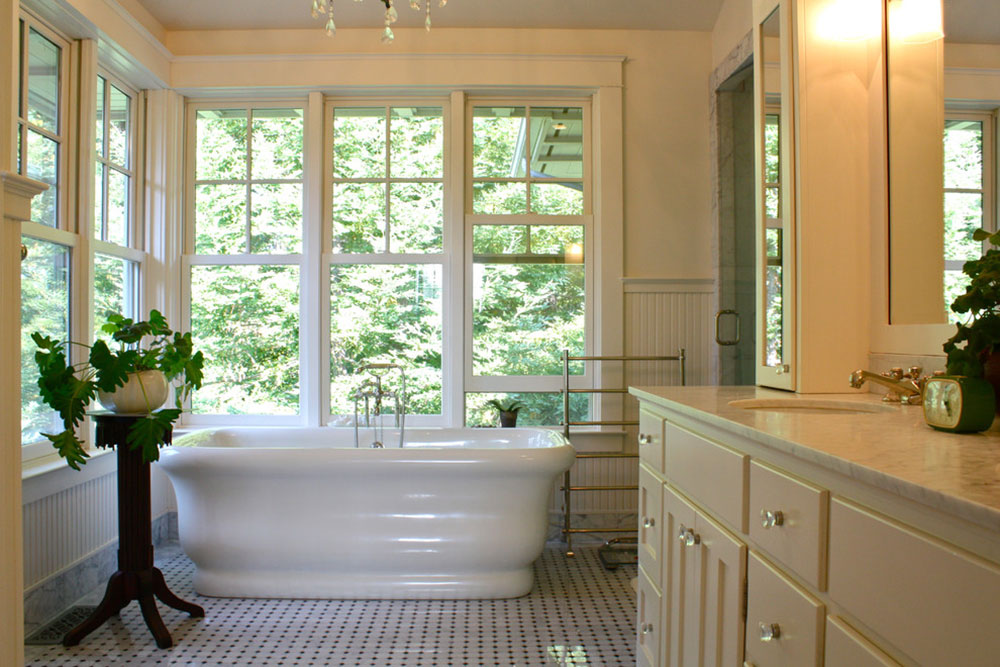 Image source: Shannon Malone
Image source: Shannon Malone
The latter has been fixed, however. Like the previous ones, simply hanging windows have central handles and locks, while some of them also have additional security mechanisms.
An interesting solution to consider is double hanging tilt wash windows as you never have to go outside and clean them. You can do this perfectly from the comfort of your interior.
Tilt-wash windows are among the most space-saving solutions, which is why they are very popular in some regions of the world. Just like double hanging windows, they look best when facing a patio, patio, or similar room.
Horizontal slider
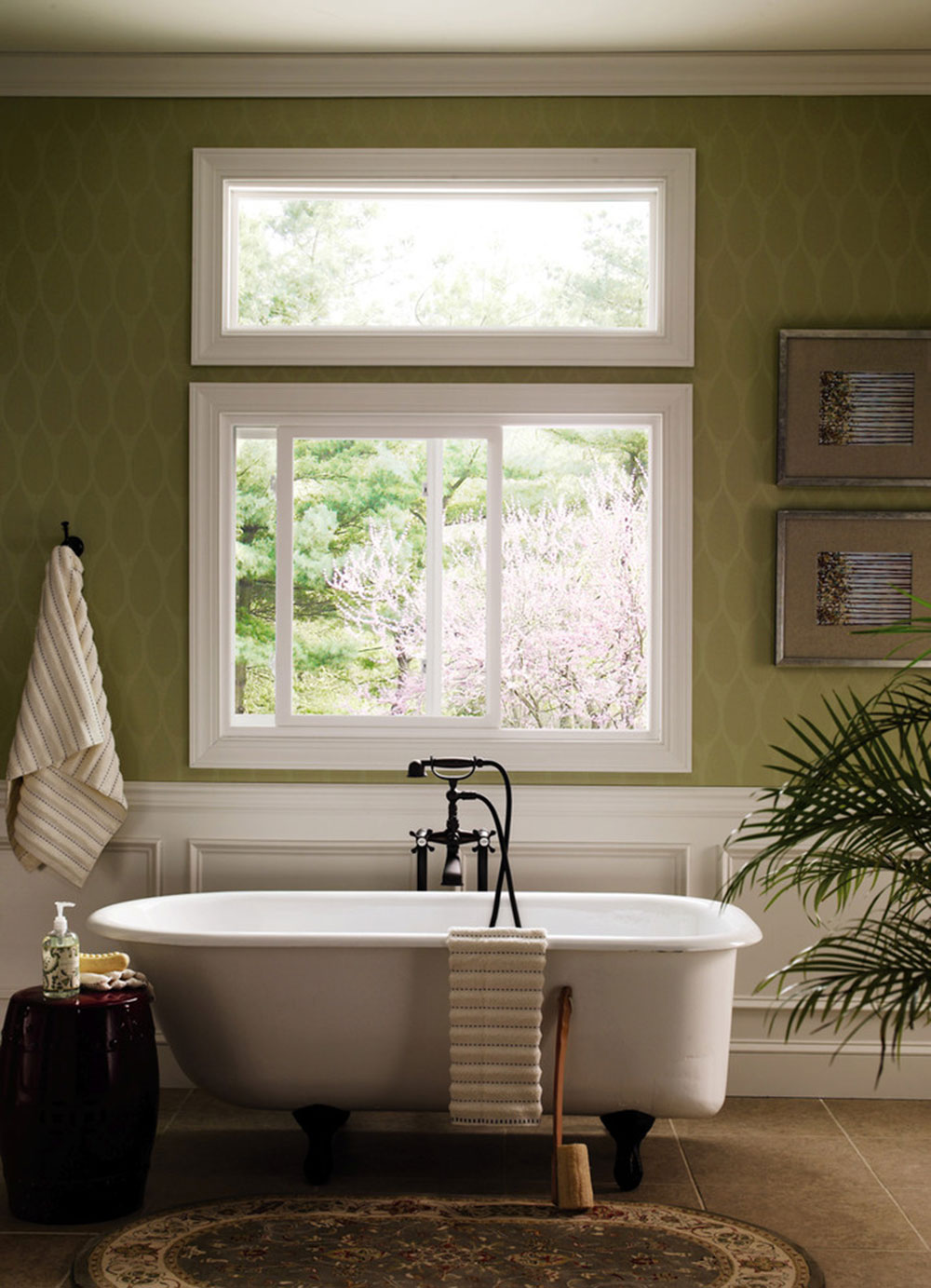 Image source: Pella windows and doors
Image source: Pella windows and doors
They represent individual panes of glass that slide either left or right. They are very popular and modern window solutions, mainly because they do not take up space and are easy to use.
There are also the so-called double sliders that maximize the air circulation in your room.
Bay and bay windows
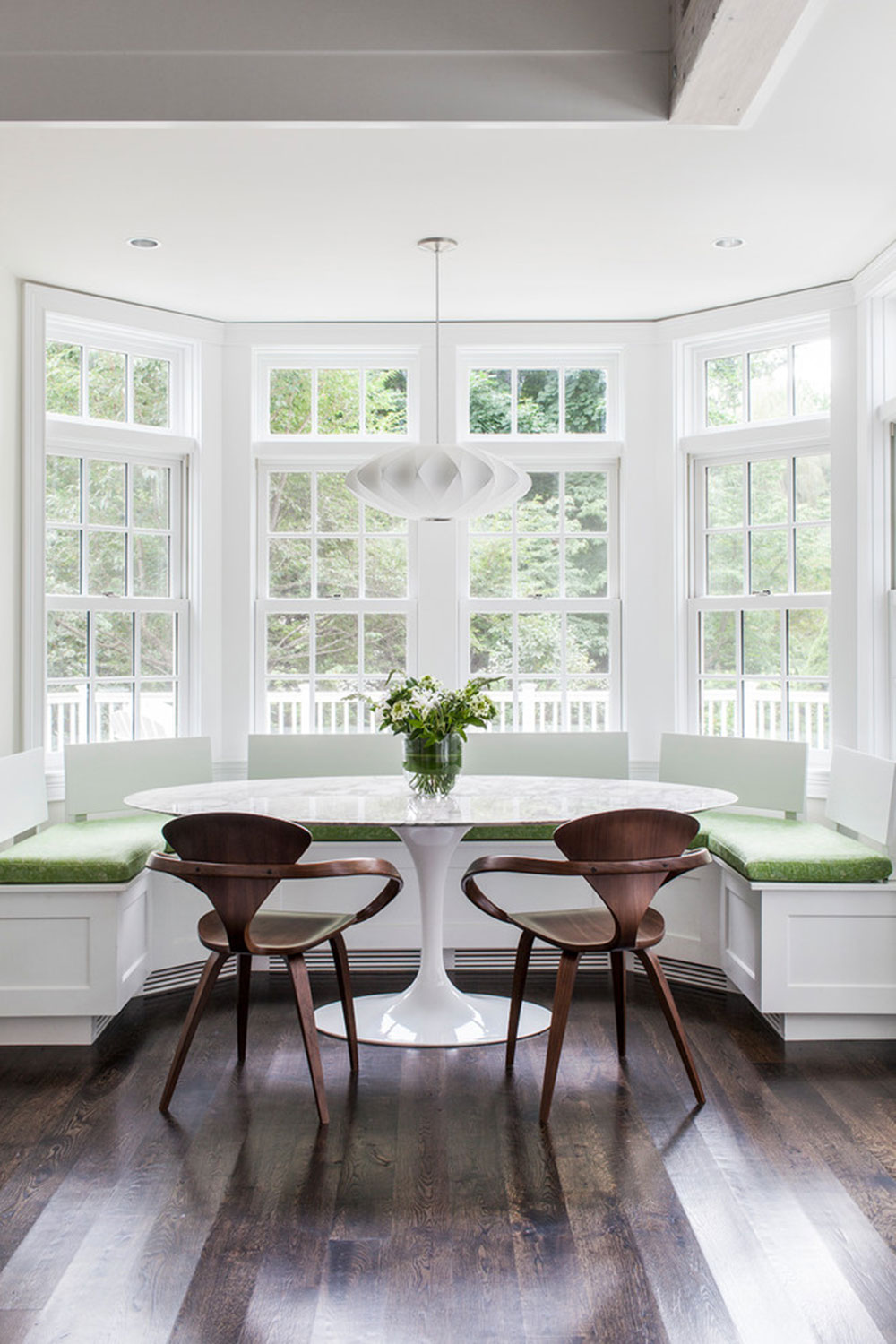 Image source: LDa architecture & interior
Image source: LDa architecture & interior
A bay window consists of three parts: a large, solid pane in the middle and sash / double panes positioned at an angle of 30 to 45 degrees on both sides. They can be opened as well as pinned.
Bay windows, on the other hand, consist of at least four panes of the same size, with the wings mostly arranged in gradual arched projections.
Both bay and bay windows are good choices for a good landscape or for spaces where natural light is urgently needed.
Garden window
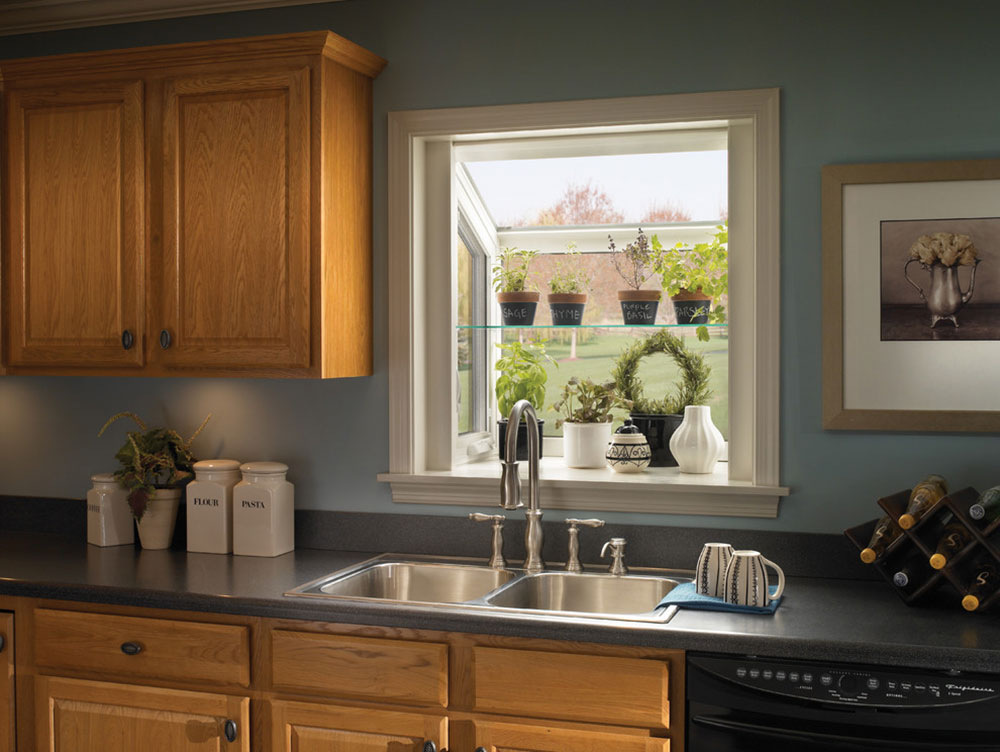 Image source: Ply Gem
Image source: Ply Gem
Garden windows are a kind of interior extension, that is, they look like glass boxes with internal shelves for plants and herbs.
Because of their size, they should be somewhere other than the patios, sidewalks, or seating on your porch. A great pro in their case is multiple side slits.
Accent window
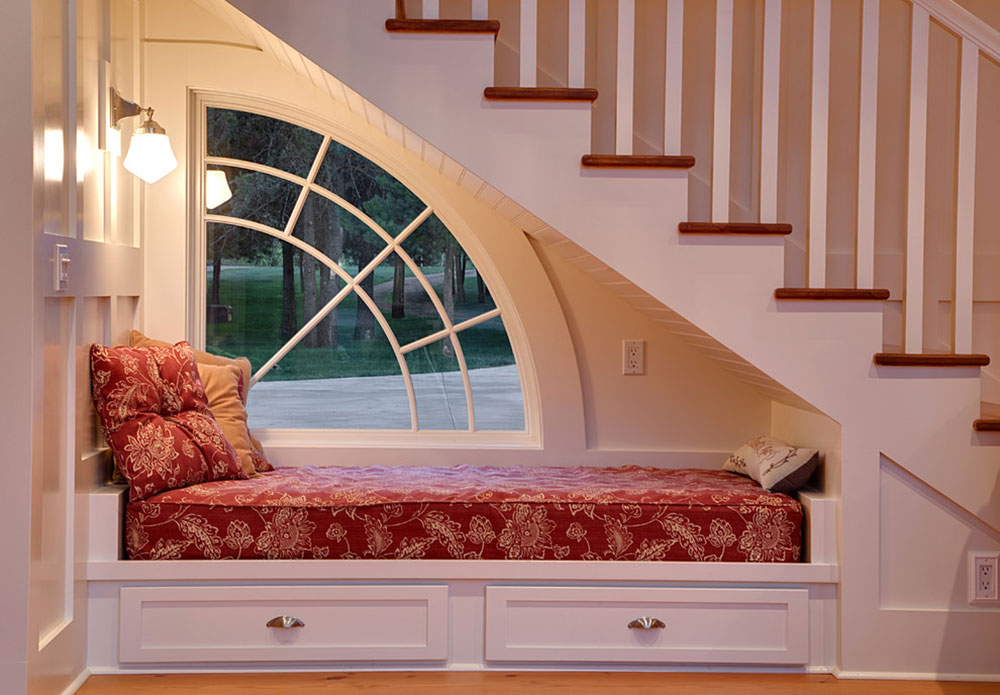 Image source: Jon R. Sayler, architect AIA PS
Image source: Jon R. Sayler, architect AIA PS
Most often, accent windows are solid, which means that ventilation is not one of their qualities. As a benefit, we could mention the numerous shapes they can have, especially rare ones that are not available for other types of windows.
Funnel window
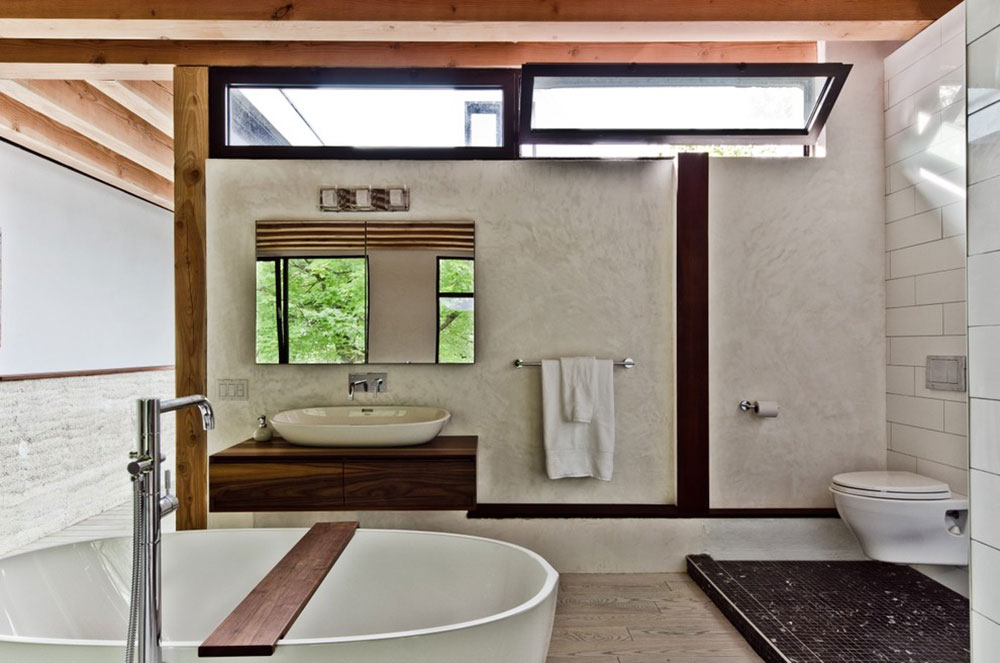 Image source: WETSTYLE
Image source: WETSTYLE
They are the same as awning windows, only in the opposite direction: they are hinged directly to the floor and pivoted inwards. While they might not be the smartest choice for a living area, they work well in basements and garages.
Rear window
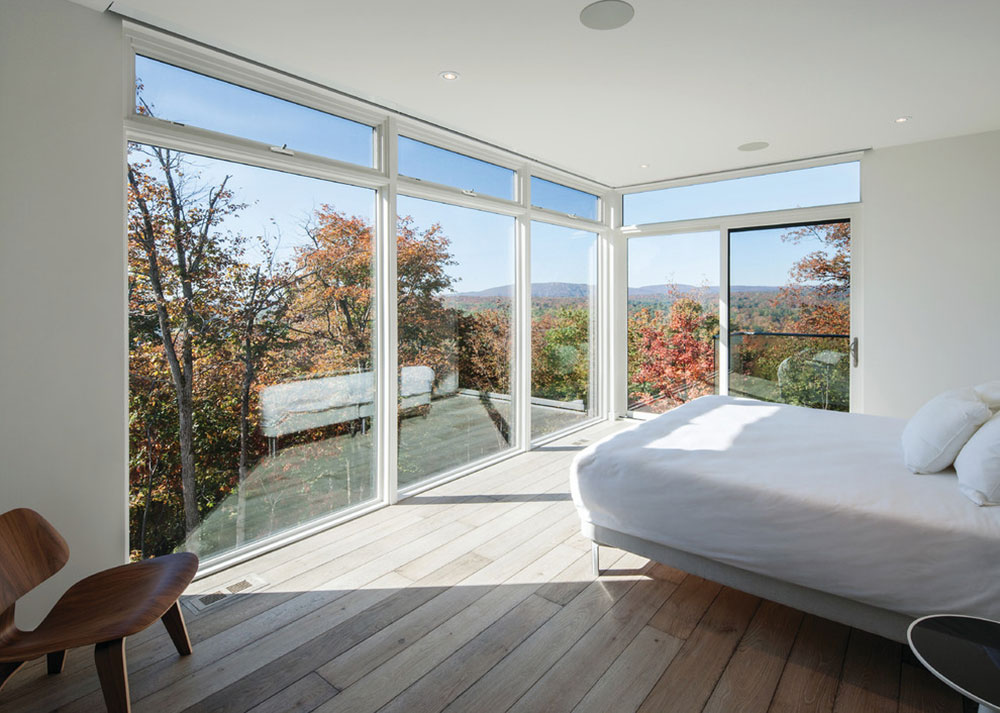 Image source: Marvin windows and doors
Image source: Marvin windows and doors
The term rear window is used for combinations of a few window styles, such as ventilation windows and fixed windows. They usually stand on or under larger windows / doors to make sure there is more vet and sunlight in a room.
Since they are intended to complement an already installed window, they are available in many shapes: rectangular, square, rounded, elliptical, etc.
Radius window
Their more common name is arched window, which means they have a unique shape. The lower part is rectangular, while the upper part resembles an arch or is simply semi-rounded.
According to WCMA window & doorTheir strongest quality is their looks as they can add regal appearances to even the simplest room. They are available in both a fixed and a functional version.
Skylights
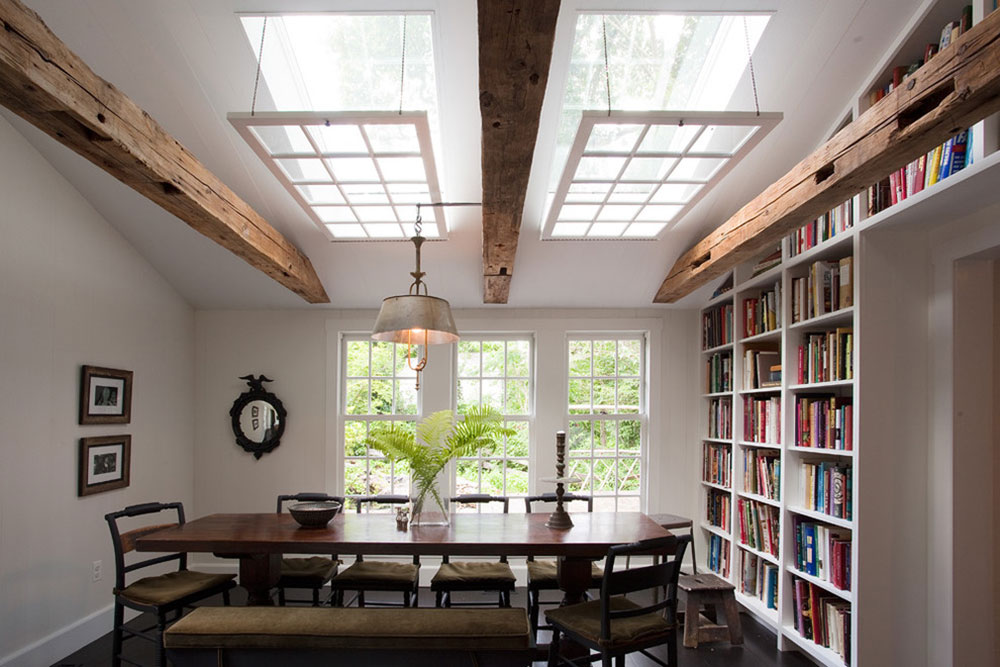 Image source: Sullivan Building & Design Group
Image source: Sullivan Building & Design Group
Skylights are the best solution from an aesthetic point of view: they are horizontal sheets of glass that are installed on your ceiling not only because of the natural light, but also because they offer breathtaking views of the sky.
These windows are perfect for private spaces (e.g. bathrooms) or as an amazing addition to rooms without external walls.
Sliding window
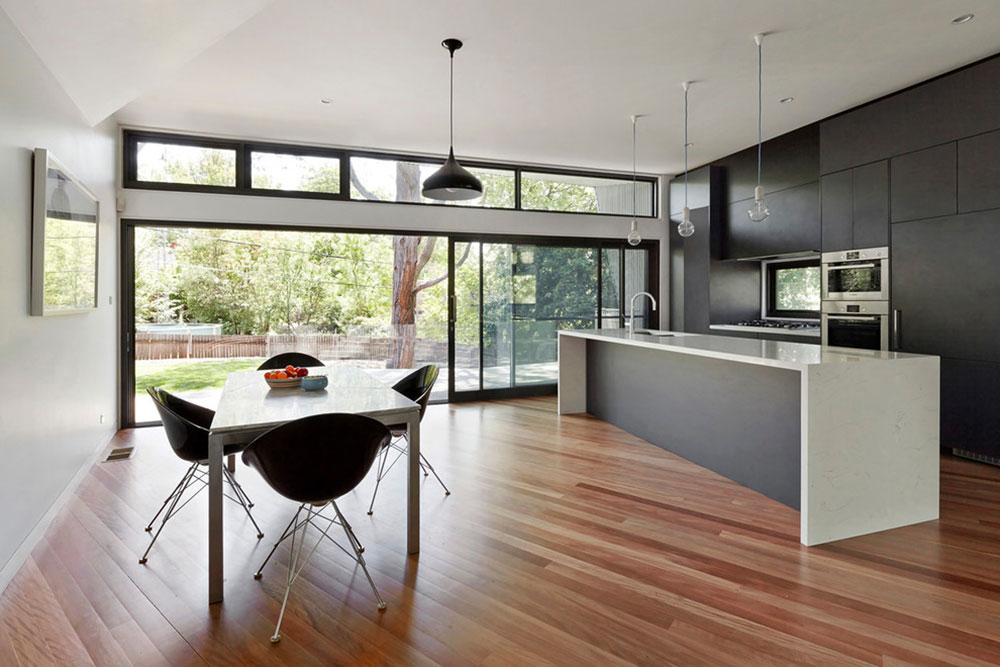 Image source: Adam Dettrick Architects
Image source: Adam Dettrick Architects
Sliding windows are always a preferred choice in terms of usability and configuration as there are two panes of glass (each half the width of the window), one of which is fixed and the other is movable and slides horizontally towards the other to let air in.
Larger windows (8 feet wide or more) even have three panes: one fixed in the center and two flexible on the sides.
Sliding windows are a good solution because you don’t have to pivot them and they don’t take up space when you open them. Plus, they’re a smart security option: they come with separate handles and locks on each disc (you can open them up about an inch and lock them in such a position).
Blind window
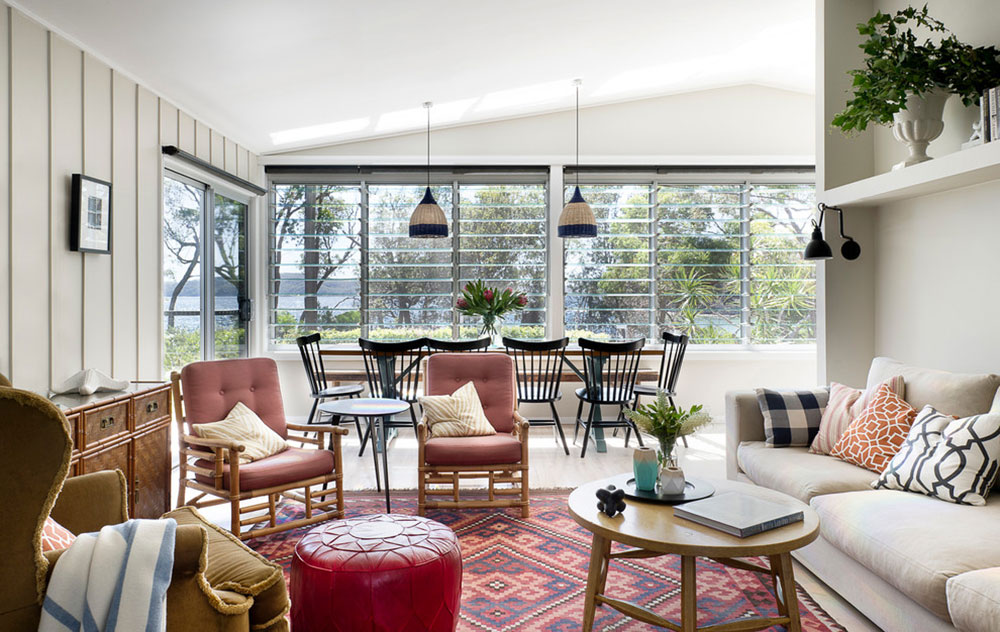 Image source: Brett Mickan Interior Design
Image source: Brett Mickan Interior Design
Louvre windows (or louvre windows) are made up of several layers of glass and are usually installed in reception rooms overlooking sunny verandas or beautiful gardens.
They are very practical and have an efficient locking mechanism that keeps the heat inside, but draws in enough fresh air when needed.
Window walls
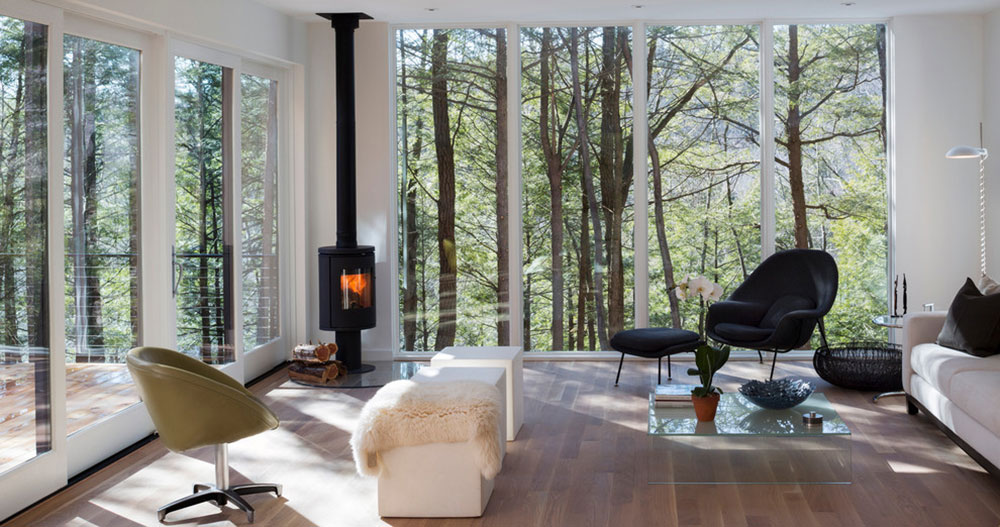 Image source: Studio MM, pllc
Image source: Studio MM, pllc
Just as the name suggests, window walls stand for a complete replacement of walls with solid glass, edge to edge, floor to ceiling. They can serve as internal room dividers or external “covers” of various sizes and shapes that offer great views of the outside world.
If you enjoyed reading this article about this modern window design, you should read this too:
 Flower Love
Flower Love
